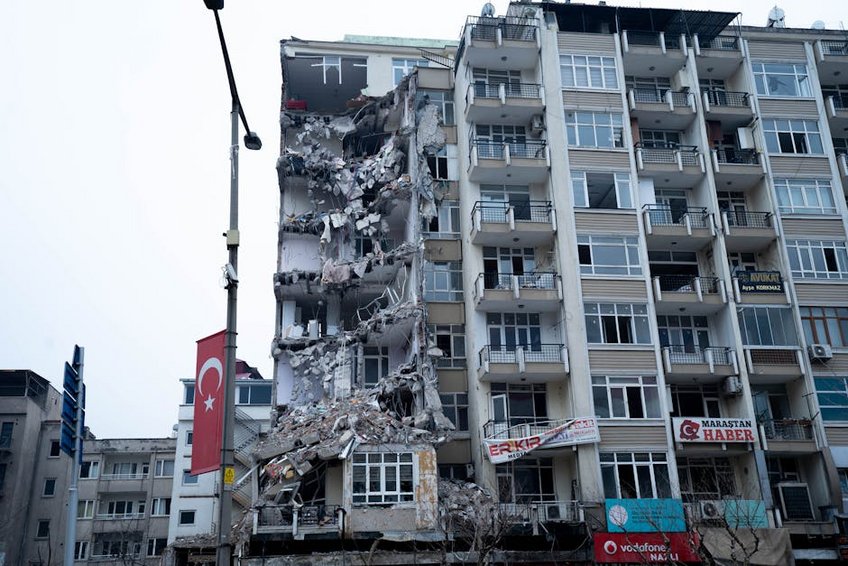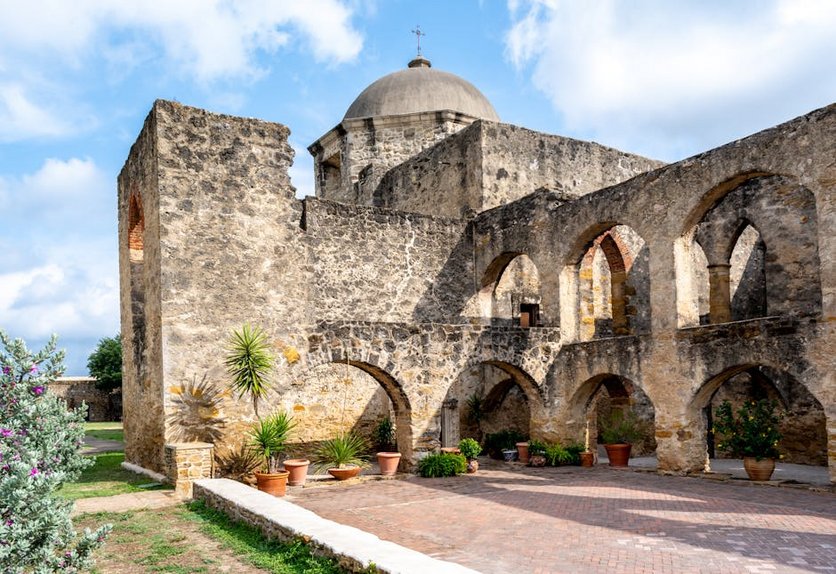Exploring the Paraguay Jesuit Missions Ruins: A Journey Through History
If you’re fascinated by colonial history and UNESCO World Heritage sites, the Paraguay Jesuit Missions Ruins offer an unforgettable glimpse into a unique chapter of South American history. Nestled in the lush landscapes of eastern Paraguay, these remarkable ruins represent the remains of Jesuit reducciones (settlements) established in the 17th and 18th centuries to convert and protect indigenous Guaraní communities. As you wander through these atmospheric sites, you’ll discover beautifully preserved churches, intricate carvings, and sprawling plazas that whisper tales of cultural fusion, religious devotion, and colonial resistance. Visiting the Paraguay Jesuit Missions Ruins isn’t just a trip—it’s an immersive experience that connects you with the resilience of the Guaraní people and the architectural genius of the Jesuit missionaries. Whether you’re a history buff, a photography enthusiast, or simply seeking a off-the-beaten-path adventure, this destination promises deep cultural insights and stunning visuals. From the iconic Jesús de Tavarangüe to the serene Trinidad del Paraná, each mission site has its own character and stories waiting to be uncovered. I’ve explored these ruins extensively, and in this guide, I’ll share everything you need to plan your visit, including practical tips, budget advice, and hidden gems that make the Paraguay Jesuit Missions Ruins a must-see for any traveler to South America.
Paraguay Jesuit Missions Ruins – Essential Information
Before diving into your adventure, it’s crucial to understand what makes the Paraguay Jesuit Missions Ruins so special. These sites are part of a network of Jesuit missions spread across Paraguay, Argentina, and Brazil, but the Paraguayan ones are particularly well-preserved and accessible. Founded between 1609 and 1768, these reducciones were self-sufficient communities where Jesuits and Guaraní people lived together, blending European and indigenous cultures in architecture, art, and daily life. The ruins include churches, residences, workshops, and cemeteries, many featuring Baroque influences mixed with Guaraní motifs. Key sites like Trinidad and Jesús are UNESCO World Heritage listed, recognized for their outstanding universal value. When you visit, you’ll notice the red sandstone constructions, intricate sculptures, and the peaceful ambiance that pervades these historical grounds. Understanding this background will enrich your experience, as you’ll appreciate not just the stones but the stories of cooperation, faith, and eventual abandonment after the Jesuits’ expulsion. This knowledge sets the stage for a meaningful exploration of these atmospheric ruins.
What Are the Jesuit Missions? – A Historical Overview
- The Jesuit Missions were religious and social settlements established by Jesuit priests in the 17th century to evangelize indigenous Guaraní people while protecting them from slavery and exploitation.
- These communities became centers of education, agriculture, and arts, with populations sometimes exceeding 4,000 people, featuring schools, hospitals, and elaborate churches built using local materials and techniques.
- Today, the ruins serve as open-air museums, offering insights into a unique experiment in cross-cultural living that lasted over 150 years before the Jesuits were expelled by Spanish authorities.
- Budget travelers can expect daily costs of $30-50 USD, covering hostel stays, local meals, and public transport; entry fees to ruins range from $5-10 USD per site.
- Mid-range options cost $70-120 USD daily, including comfortable hotels, guided tours, and rental cars for flexibility in exploring multiple missions.
- Luxury experiences may exceed $150 USD per day, featuring boutique accommodations, private guides, and fine dining in Encarnación, with added costs for specialized historical tours.
- Paraguay National Tourism Secretariat – Official travel information
- UNESCO World Heritage Centre – Jesuit Missions of La Santísima Trinidad de Paraná and Jesús de Tavarangüe
Key Historical Significance and UNESCO Status
The Paraguay Jesuit Missions Ruins hold immense historical significance as symbols of cultural synthesis and resistance. Designated as UNESCO World Heritage sites in 1993, they are protected for their architectural innovation and testimony to the Jesuit-Guaraní cultural exchange. The missions demonstrate how European Baroque styles were adapted to local conditions, with buildings oriented to catch natural light and designed for community life. UNESCO highlights their role in preserving Guaraní language and traditions despite colonial pressures. As you explore, you’ll see how these sites influenced regional development and continue to inspire studies in anthropology and history. Their preservation efforts involve ongoing restoration work, supported by international organizations, ensuring that future generations can learn from this unique heritage.
Paraguay Jesuit Missions Ruins – Planning Your Trip
Planning your visit to the Paraguay Jesuit Missions Ruins requires careful consideration of timing, budget, and logistics to make the most of your experience. Located primarily in the Itapúa Department, about 4-5 hours from Asunción, these sites are best explored over 2-3 days to fully appreciate their depth. You’ll need to arrange transportation, as public options are limited, and consider factors like weather, which can affect accessibility. I recommend starting in Encarnación, the gateway city, where you can base yourself for day trips. Budget-wise, Paraguay is relatively affordable, but costs can vary based on your travel style—from backpacker hostels to comfortable hotels. Don’t forget to check visa requirements; for US and EU passport holders, Paraguay typically offers visa-free entry for up to 90 days, but always verify current regulations before traveling. Pack light, breathable clothing for the subtropical climate, plus sturdy shoes for walking over uneven terrain. With proper planning, your trip to the Paraguay Jesuit Missions Ruins will be smooth and rewarding, filled with historical discoveries and cultural immersion.
Best Time to Visit Paraguay Jesuit Missions Ruins
The ideal time to explore the Paraguay Jesuit Missions Ruins is during the dry season from April to September, when temperatures are milder (60-75°F or 15-24°C) and rainfall is minimal. This period offers comfortable conditions for walking and photography, with clear skies highlighting the ruins’ architectural details. Avoid the summer months (December to February), as heat and humidity can exceed 95°F (35°C), making outdoor activities strenuous. Shoulder seasons like March and October provide a balance with fewer crowds, but be prepared for occasional rain. If you visit in winter (June-August), pack layers for cooler evenings. Seasonal festivals, such as religious celebrations in nearby towns, can add cultural depth but may increase accommodation prices, so book in advance.
Budget Planning and Costs for Your Visit
Essential Preparation Checklist
To ensure a hassle-free visit, start by securing travel insurance that covers medical emergencies and trip cancellations, as healthcare facilities in rural areas may be basic. Learn a few phrases in Spanish or Guaraní—locals appreciate efforts to communicate, though English is limited. Pack essentials like sunscreen, insect repellent, a reusable water bottle, and a power bank for charging devices, as electricity can be unreliable. Book accommodations early, especially during peak seasons, and download offline maps since internet connectivity might be spotty. Lastly, carry cash in Paraguayan guaranís (PYG) for entry fees and small purchases, as credit cards aren’t widely accepted at the ruins. This preparation will help you focus on absorbing the rich history of the Paraguay Jesuit Missions Ruins.

Paraguay Jesuit Missions Ruins – Top Attractions and Activities
When you arrive at the Paraguay Jesuit Missions Ruins, you’ll find a wealth of attractions that bring history to life through guided tours, self-exploration, and cultural interactions. The most famous sites include Trinidad del Paraná and Jesús de Tavarangüe, both UNESCO-listed, where you can admire ornate facades, grand churches, and residential quarters. At Trinidad, don’t miss the central plaza and the museum displaying artifacts like pottery and religious items. Jesús features an unfinished church with stunning arches and carvings that reveal the missions’ ambitious scale. Beyond these, lesser-known gems like San Cosme y Damián offer astronomical observatories, highlighting the Jesuits’ scientific contributions. Activities range from photography sessions at sunrise, when the light casts dramatic shadows on the stones, to attending local Guaraní cultural performances in nearby communities. I recommend spending at least two days to cover the main ruins thoroughly, allowing time for reflection and soaking in the serene atmosphere. Each site has its unique charm, so pace yourself to avoid burnout and fully appreciate the spiritual and historical depth of the Paraguay Jesuit Missions Ruins.
Must-See Highlights at the Mission Sites
Your first stop should be Trinidad del Paraná, the largest and best-preserved mission, where you can explore the church with its intricate reliefs and the adjacent museum housing Guaraní artifacts. Next, head to Jesús de Tavarangüe, known for its red sandstone architecture and the “Casa de los Indios” residential area. Here, you’ll see how daily life was organized, with communal spaces and workshops. Another highlight is the Santísima Trinidad del Paraná’s bell tower, offering panoramic views of the surrounding countryside. These sites are easily accessible from Encarnación and provide a comprehensive overview of the missions’ layout and significance. Guided tours, available in Spanish and sometimes English, enhance the experience with stories of Jesuit innovations and Guaraní resilience, making these highlights unforgettable parts of your Paraguay Jesuit Missions Ruins adventure.
Hidden Gems and Local Favorites
Venture off the main tourist path to discover hidden gems like the San Ignacio Mini area, which includes smaller ruins and local artisan markets where you can buy handmade crafts. In nearby towns, engage with Guaraní communities through homestays or cultural workshops, learning about traditional music and dance. Don’t overlook the natural surroundings; many ruins are set against lush forests, perfect for birdwatching or quiet picnics. Local favorites include visiting during weekdays to avoid crowds and exploring at dusk when the ruins take on a mystical aura. These experiences offer a deeper connection to the living culture behind the Paraguay Jesuit Missions Ruins, revealing how history continues to influence modern Paraguayan life.
Paraguay Jesuit Missions Ruins – Practical Travel Information
Navigating the practical aspects of your trip to the Paraguay Jesuit Missions Ruins is key to a smooth journey. Transportation options include renting a car from Asunción or Encarnación for flexibility, as public buses run infrequently and may not reach all sites directly. The roads are generally paved but can be narrow, so drive cautiously. Alternatively, join organized tours from Encarnación, which often include guides and transport for around $50-80 USD per person. Accommodation ranges from budget hostels in Encarnación to charming guesthouses near the ruins, with prices from $20-100 USD per night. For meals, expect hearty Paraguayan cuisine like sopa paraguaya (cornbread) and chipa (cheese bread) at local eateries for $5-10 USD. Communication is easier if you have basic Spanish, as English is not widely spoken. Safety is generally good, but take standard precautions like securing valuables and avoiding isolated areas after dark. This practical advice will help you focus on enjoying the historical richness of the Paraguay Jesuit Missions Ruins without unnecessary stress.
| Category | Options/Features | Price Range (USD) |
|---|---|---|
| Accommodation | Hostels, mid-range hotels, boutique stays in Encarnación | $20-100 per night |
| Transportation | Rental cars, buses, guided tours from major cities | $30-80 per day |
| Entry Fees | Per site access, combined tickets for multiple ruins | $5-15 per person |


